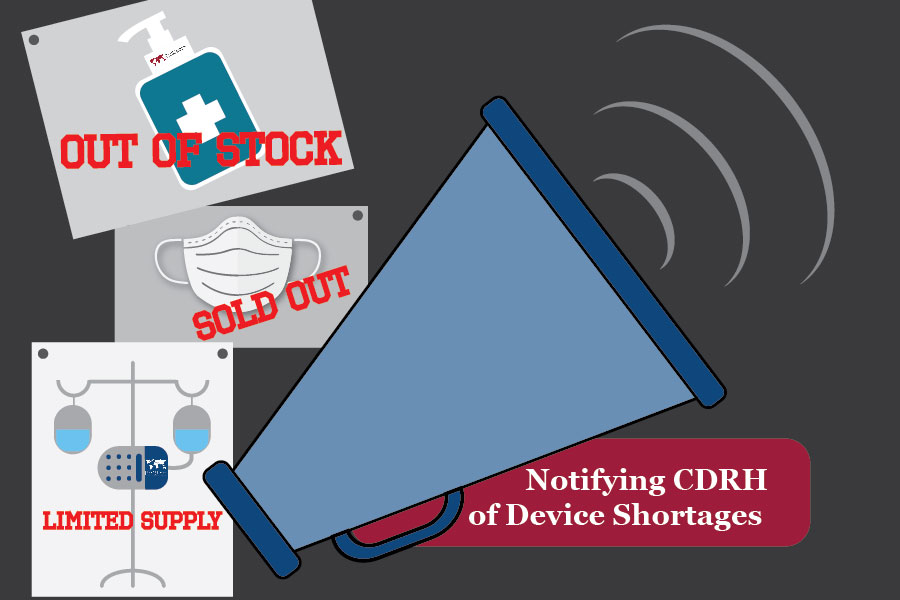COVID-19 has severely disrupted the medical device supply chain. Device manufacturers are typically not required to report shortages of device supplies or interruptions in the production to the FDA. However, in light of the pandemic situation, CDRH requires that device manufacturers report any shortages, interruptions, or permanent discontinuation of devices essential for the prevention or diagnosis of COVID-19.
FDA clarifies that these requirements apply for manufacturers of medical devices who hold the medical marketing submission authorization, or, if a medical device marketing submission is not required, is responsible for listing the device.1
The requirements are applicable to the following device types:1
- Devices that are critical to public health during a public health emergency, including those that are life-supporting, life-sustaining, or intended for use in emergency medical care or during surgery; or
- Devices for which FDA determines information on potential meaningful supply disruptions are needed during a public health emergency.
Manufacturers must notify FDA at least six months in advance of a permanent discontinuance of manufacturing or interruptions in the manufacturing of a device. If it is not possible to meet this timeframe, manufacturers must notify the FDA as soon as possible but no later than 7 calendar days after such interruptions or discontinuance. 1
FDA also clarifies that interruptions due to routine maintenance or interruptions in manufacturing of components or raw materials, that do not result in a shortage of the device are not required to be reported as long as the manufacturer resumes its operations in a short period of time not exceeding six months.1
FDA recommends that manufacturers provide updates every two weeks on the situation, including the expected timeline for recovery. This information will allow FDA to work with the manufacturer and other stakeholders to take the necessary steps and prevent shortages of supplies.1
We are closely monitoring the FDA’s changing regulations and requirements for device makers and will keep you informed of major developments. Have more questions? Call us today at 248-987-4497 or email us at info@emmainternational.com.
1FDA (May 2020) Notifying CDRH of a Permanent Discontinuance or Interruption in Manufacturing of a Device Under Section 506J of the FD&C Act During the COVID-19 Public Health Emergency retrieved on 05/06/2020 from https://www.fda.gov/media/137712/download






